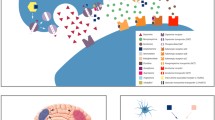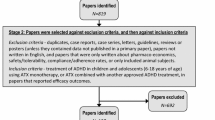Abstract
Attention-deficit hyperactivity disorder (ADHD) is a common and impairing psychiatric condition that affects significant numbers of children, adolescents and adults. Clinicians in a variety of practice settings (hospital, outpatient, residential, research) strive to diagnose, treat and monitor ADHD in an efficient and evidence-based manner. Tools that facilitate the gathering and interpretation of information from a variety of sources can effectively augment a diagnostic assessment, and can also be useful for longitudinal monitoring. Multiple assessment tools are available, with varying degrees of psychometric validity, clinical utility and overall feasibility (time and cost).
This review provides an overview of several available ADHD rating scales and continuous performance tests, and offers a discussion of potential strengths and weaknesses of the instruments. While these tools do not in and of themselves make a diagnosis of ADHD, they can certainly assist in the diagnostic assessment, be crucial in assessing the efficacy of medications in clinical trials, and be a useful adjunct in the clinical management of ADHD.


Similar content being viewed by others
Notes
The use of trade names is for product identification purposes only and does not imply endorsement.
References
American Psychiatric Association. Diagnostic and statistical manual of mental disorders. 4th ed., text rev. Washington, DC: American Psychiatric Association, 2000
Barkley RA, Fischer M, Edelbrock CS, et al. The adolescent outcome of hyperactive children diagnosed by research criteria: I. An 8-year prospective follow-up study. J Am Acad Child Adolesc Psychiatry 1990; 29(4): 546–57
Kessler RC, Adler LA, Barkley R, et al. Patterns and predictors of attention-deficit/hyperactivity disorder persistence into adulthood: results from the national comorbidity survey replication. Biol Psychiatry 2005; 57(11): 1442–51
Shelton TL, Barkley RA, Crosswait C, et al. Psychiatric and psychological morbidity as a function of adaptive disability in preschool children with aggressive and hyperactive-impulsive-inattentive behavior. J Abnorm Child Psychol 1998; 26(6): 475–94
Leibson CL, Katusic SK, Barbaresi WJ, et al. Use and costs of medical care for children and adolescents with and without attention-deficit/hyperactivity disorder. JAMA 2001; 285(1): 60–6
Pliszka SR, Crismon ML, Hughes CW, et al. The Texas Children’ s Medication Algorithm Project: revision of the algorithm for pharmacotherapy of attention-deficit/hyperactivity disorder. Texas Consensus Conference Panel on Pharmacotherapy of Childhood Attention Deficit Hyperactivity Disorder. J Am Acad Child Adolesc Psychiatry 2006; 45(6): 642–57
MTA Cooperative Group. A 14-month randomized clinical trial of treatment strategies for attention-deficit/hyperactivity disorder: multimodal treatment study of children with ADHD. Arch Gen Psychiatry 1999; 56: 1073–86
Wells KC, Pelham WE, Kotkin RA, et al. Psychosocial treatment strategies in the MTA study: rationale, methods, and critical issues in design and implementation. J Abnorm Child Psychol 2000; 28(6): 483–505
Loney J, Milich R. Hyperactivity, inattention, and aggression in clinical practice. In: Routh DK, editor. Advances in behavioral pediatrics. New York: Plenum, 1982
DuPaul GJ, Power TJ, Anastopoulos AD, et al. ADHD Rating Scale IV: checklists, norms, and clinical interpretation. New York: Guilford, 1998
Zhang S, Faries DE, Vowles M, et al. ADHD rating scale IV: psychometric properties from a multinational study as a clinician-administered instrument. Int J Methods Psychiatr Res 2005; 14(4): 186–201
Magnusson P, Smart J, Gretarsdottir H, et al. Attention-deficit/ hyperactivity symptoms in Icelandic school children: assessment with the Attention Deficit/Hyperactivity Rating Scale-IV. Scand J Psychol 1999; 40: 301–6
Faries DE, Yalcin I, Harder D, et al. Validation of the ADHD rating scale as a clinician administered and scored instrument. J Atten Disord 2001; 5(2): 107–15
de Ramirez RD, Shapiro ES. Teacher ratings of attention deficit hyperactivity disorder symptoms in Hispanic children. J Psychopathol Behav Assess 1998; 20: 275–93
Swanson J. School based assessments and interventions for ADD students. Irvine (CA): K.C. Publishing, 1992
Swanson JM, Kraemer HC, Hinshaw SP, et al. Clinical relevance of the primary findings of the MTA: success rates based on severity of ADHD and ODD symptoms at the end of treatment. J Am Acad Child Adolesc Psychiatry 2001; 40: 168–79
Conners C. A teacher rating scale for use in drug studies with children. Am J Psychiatry 1969; 126: 884–8
Gaub M, Carlson CL. Behavioral characteristics of DSM-IV ADHD subtypes in a school-based population. J Abnorm Child Psychol 1997; 25: 103–11
Newcorn JH, Halperin JM, Jensen PS, et al. Symptom profiles in children with ADHD: effects of comorbidity and gender. J Am Acad Child Adolesc Psychiatry 2001; 40: 137–46
ADHD.net [online]. Available from URL: http://www.ADHD.net [Accessed 2007 Mar 25]
Stevens J, Quittner AL, Abikoff H. Factors influencing elementary school teachers’ ratings of ADHD and ODD behaviors. J Clin Child Psychol 1998; 27: 406–14
Swanson JM, Gupta S, Williams L, et al. Efficacy of a new pattern of delivery of methylphenidate for the treatment of ADHD: effects on activity level in the classroom and on the playground. J Am Acad Child Adolesc Psychiatry 2002; 41: 1306–14
Swanson JM, Wigal S, Greenhill LL, et al. Analog classroom assessment of Adderall in children with ADHD. J Am Acad Child Adolesc Psychiatry 1998; 37: 519–26
Wigal SB, Gupta S, Guinta D, et al. Reliability and validity of the SKAMP rating scale in a laboratory school setting. Psycho-pharmacol Bull 1998; 34: 47–53
Greenhill LL, Swanson JM, Vitiello B, et al. Impairment and deportment responses to different methylphenidate doses in children with ADHD: the MTA titration trial. J Am Acad Child Adolesc Psychiatry 2001; 40: 180–7
Conners C. Conners’ rating scales: revised technical manual. North Tonawanda (NY): Multi-Health Systems, 1997 [online]. Available from URL: http://www.mhs.com [Accessed 2008 Mar 3]
Wolraich ML, Feurer ID, Hannah JN, et al. Obtaining systematic teacher reports of disruptive behavior disorders utilizing DSM-IV. J Abnorm Child Psychol 1998; 26: 141–52
Wolraich ML. Vanderbilt ADHD Teacher Rating Scale (VADTRS) and the Vanderbilt ADHD Parent Rating Scale (VADPRS), 2003 [online]. Available from URL: http://www.nichq.org [Accessed 2008 Feb 8]
Lindgren S, Koeppl GG. Assessing child behavior problems in a medical setting: development of the Pediatric Behavior Scale. In: Prinz RJ, editor. Advances in behavioral assessment of children and families. Vol. 3. Greenwich (CT): JAI Press, 1987: 57–90
Wolraich ML, Lambert W, Doffing MA, et al. Psychometric properties of the Vanderbilt ADHD diagnostic parent rating scale in a referred population. J Pediatr Psychol 2003; 28(8): 559–67
Wolraich ML, Lambert EW, Bickman L, et al. Assessing the impact of parent and teacher agreement on diagnosing attention-deficit hyperactivity disorder. J Dev Behav Pediatr 2004; 25(1): 41–7
Swanson J, Schuck S, Mann M, et al. Categorical and dimensional definitions and evaluations of symptoms of ADHD: the SNAP and SWAN ratings scales, 2001 [online]. Available from URL: http://www.adhd.net [Accessed 2006 Dec 24]
Swanson J, Schuck S, Mann M, et al. Over-identification of extreme behavior in the evaluation and diagnosis of ADHD/ HKD, 2001 [online]. Available from URL: http://www.adhd.net/SNAP_SWAN.pdf [Accessed 2006 Dec 24]
Pelham WE, Milich R, Murphy DA, et al. Normative data on the IOWA Conners teacher rating scale. J Clin Child Psychol 1989; 18: 259–62
Pelham WE, Gnagy EM, Burrows-Maclean L, et al. Once-a-day concerta methylphenidate versus three-times-daily methylphenidate in laboratory and natural settings. Pediatrics 2001; 107: e105
Smith BH, Pelham WE, Gnagy E, et al. The reliability, validity, and unique contributions of self-report by adolescents receiving treatment for attention-deficit/hyperactivity disorder. J Consult Clin Psychol 2000; 68: 489–99
Pliszka SR, Browne RG, Olvera RL, et al. A double-blind, placebo-controlled study of adderall and methylphenidate in the treatment of attention-deficit/hyperactivity disorder. J Am Acad Child Adolesc Psychiatry 2000; 39: 619–26
Diamond IR, Tannock R, Schachar RJ. Response to methylphenidate in children with ADHD and comorbid anxiety. J Am Acad Child AdolescPsychiatry 1999; 38: 402–9
Scheres A, Oosterlaan J, Sergeant JA. Response execution and inhibition in children with AD/HD and other disruptive disorders: the role of behavioural activation. J Child Psychol Psychiatry 2001; 42: 347–57
Brown TE. Brown attention-deficit disorder scales for children and adolescents. San Antonio (TX): Psychological Corporation, 2001 [online]. Available from URL: http://www.psychcorp.com [Accessed 2008 Mar 3]
Prifitera A, Saklofske D, editors. WISC-III: clinical use and interpretation. New York: Elsevier, 1998
O’Laughlin EM, Murphy MJ. Use of computerized continuous performance tasks for assessment of ADHD: a guide for practitioners [online]. Available from URL: http://www.division42.org/MembersArea/IPfiles/IPSum2000/ce_AssessofADHD.html [Accessed 2007 Mar 25]
Barkley R. Can neuropsychological tests help diagnose ADD/ ADHD? ADHD Rep 1987; 1(2): 1–3
Greenberg LM. Test of variables of attention: professional manual (version 7.0). Los Alamitos (CA): Universal Attention Disorders, 1996
Conners K. Conners’ continuous performance test computer program 3.0: users manual. Toronto (ON): Multi-Health Systems, 1995
Sandford JA. Intermediate visual and auditory continuous performance test: administration and interpretation manual (version 1.2). Richmond (VA): BrainTrain, 1995
Gordon Systems and GSI Publications [online]. Available from URL: http://www.gsi-add.com/gordondiagnosticsystem.htm [Accessed 2007 Mar 25]
The TOVA Company [online]. Available from URL: http://www.tovacompany.com/store [Accessed 2007 Mar 25]
Multi-Health Systems Inc. [online]. Available from URL: http://www.mhs.com [Accessed 2007 Mar 25]
BrainTrain: changing the way people think [online]. Available from URL: http://www.braintrain.com/Merchant2/merchant.mvc?.Screen=CTGY&Category_Code=IVA [Accessed 2007 Mar 25]
Anastopoulos AD, Shelton TL. Assessing attention-deficit/ hyperactivity disorder. New York: Kluwer Academic/Plenum, 2001
Gordon M, Barkley RA, Lovett BJ. Tests and observational measures. In: Barkley RA, editor. Attention-deficit/hyperactivity disorder: a handbook for diagnosis and treatment. 3rd ed. New York: Guilford, 2006: 369–88
Swanson JM, Agler D, Fineberg E, et al. University of California, Irvine, laboratory school protocol for pharmacokinetic and pharmacodynamic studies. In: Greenhill LL, Osman BB, editors. Ritalin: theory and practice. 2nd ed. Larchmont (NY): Mary Ann Liebert, 2000: 405–30
Fabiano GA, Pelham WE, Waschbusch D, et al. A practical impairment measure: psychometric properties of the Impairment Rating Scale in three samples of children with attention-deficit/hyperactivity disorder. J Clin Child Adolesc Psychol 2006; 35: 369–85
Gresham FM, Elliott SN. Social skills rating system. Circle Pines (MN): American Guidance Service, 1990
DuPaul GJ, Rapport MD, Perriello LM. Teacher ratings of academic skills: the development of the Academic Performance Rating Scale. School Psychol Rev 1991; 20: 284–300
Pearson: assessments for specialized education needs [online]. Available from URL: http://ags.pearsonassessments.com/group.asp?.nGroupInfoID=a3400 [Accessed 2007 Jul 1]
Shaffer D, Gould MS, Brasic J, et al. A children’s global assessment scale (CGAS). Arch Gen Psychiatry 1983; 40: 1228–31
WHO, with an introduction by Michael Rutter. Multiaxial classification of child and adolescent psychiatric disorders: the ICD-10 classification of mental and behavioural disorders in children and adolescents. Cambridge: Cambridge University Press, 1996
Schorre BE, Vandvik IH. Global assessment of psychosocial functioning in child and adolescent psychiatry: a review of three unidimensional scales (CGAS, GAF, GAPD). Eur Child Adolesc Psychiatry 2004; 13(5): 273–86
Sorensen JL, Hargreaves WA, Friedlander S. Child global rating scales: selecting a measure of client functioning in a large mental health system. Eval Program Plann 1982; 5: 337–47
Clinical global impressions. In: Guy W, editor. ECDEU assessment manual for psychopharmacology, revised. Rockville (MD): National Institute of Mental Health, 1976: 218–22. DHEW publication no. ADM 76-338
Likert scaling [online]. Available from URL: http://www.socialresearchmethods.net/kb/scallik.php [Accessed 2008 Feb 8]
Collett BR, Ohan JL, Myers KM. Ten-year review of rating scales: V. Scales assessing attention-deficit/hyperactivity disorder. J Am Acad Child Adolesc Psychiatry 2003; 42(9): 1015–37
Snyder SM, Hall JR, Cornwell SL, et al. Review of clinical validation of ADHD behavior rating scales. Psychol Rep 2006; 99(2): 363–78
Pelham Jr WE, Fabiano GA, Massetti GM. Evidence-based assessment of attention deficit hyperactivity disorder in children and adolescents. J Clin Child Adolesc Psychol 2005; 34(3): 449–76
Acknowledgements
No sources of funding were used to assist in the preparation of this manuscript. Drs Madaan, Daughton, Lubberstedt and Mattai, and Ms Vaughan, have no conflicts of interest that are directly relevant to the content of this review. Dr Kratochvil has consulted with, received grants from and/or given talks for Eli Lilly and Company, Shire, Pfizer, AstraZeneca, Cephalon, McNeil, Abbott and Organon.
Author information
Authors and Affiliations
Corresponding author
Rights and permissions
About this article
Cite this article
Madaan, V., Daughton, J., Lubberstedt, B. et al. Assessing the Efficacy of Treatments for ADHD. CNS Drugs 22, 275–290 (2008). https://doi.org/10.2165/00023210-200822040-00002
Published:
Issue Date:
DOI: https://doi.org/10.2165/00023210-200822040-00002




